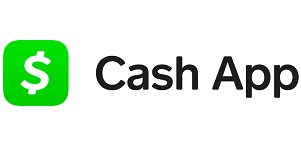The best mobile apps for payment allow you to store forms of payment, like your credit card, to quickly spend and send money without going to an ATM. Payment apps are easy to use and typically offer low fees. You can pay use the best payment apps for your small business, splitting a bill at a restaurant with a friend, to transfer money to family, track spending and send money internationally.
Paypal is one of the most reputable names for peer-to-peer payment apps offering convenient payment options fees that are typically low depending on your method of payment and use.
Another top option for a payment app is Cash App, offering easy sign up and number of robust tools and add-ons. You can send money to a friend’s Cash App tag and get a debit card, but also use Cash App for other things, like invest in stocks and file taxes. The fact that it’s more of a platform is what makes it one of our top picks for a payment app.
Overview: Best payment apps
- Best for low-fee transactions: PayPal
- Best for easy account setup: Cash App
- Best for sending small amounts of money: Venmo
- Apple Pay for iOS or Google Pay for those that prefer Google are also great payment apps
PayPal

PayPal is one of the best original peer-to-peer payment apps, offering direct transfers from your debit card or bank account to family and friends for free.
- Compatible with: Android, iOS
- Payment limits: No limits on total money you can send from your verified account. Up to $60,000 in a single transaction, but may be limited to $10,000.
- Cost to send money: If paying with a credit card, debit card, or PayPal credit you pay 2.99% plus a fee fixed fee
PayPal is also available with merchant accounts, allowing businesses to accept payments and manage payments to employees and contractors.
PayPal offers unlimited transfers to verified accounts. You can send up to $60,000 in a single transaction, but you may be limited to $10,000. There may also be additional verification needed on larger transactions.
Fun fact: I bought a used car by transferring funds through PayPal. It only took a few days, but additional verification was needed.
PayPal is available on most iOS and Android devices and is free to download. There are fees for paying with a credit card (2.99% plus a fixed fee), or for business payments. And PayPal also charges for instant transfer withdrawals to your bank account, charging 1.50% on total balance with a minimum fee charged.
» MORE: Learn more about Paypal
Cash App
Cash App is a simple-to-use payment app with easy setup that allows you to open an account with just your phone number and a linked debit card with no account, maintenance, or annual fees.
Cash App is a safe, low-cost payment app option that lets you transfer money, make purchases, and more from your mobile device. Expanded offerings including free tax services, trading capabilities, and a teen-friendly debit card set it apart from other money transfer apps.
- Offers instant deposits
- Free transfers from bank account
- Early direct deposit
- Low limits on unverified accounts
- Credit card transfer fees
- Deposit fees on instant transfers
- Compatible with: Android, iOS
- Payment limits: Initial limit of $250 per transaction in a seven-day period. Limits can be raised by providing more personal information.
- Cost to send money: Free using debit card. 3% fee if sending by credit card. Up to $2.50 ATM fee (waived with $300+ in direct deposit per month).
Cash App is owned by payments company Square, and allows users to pay via a user’s $Cashtag, phone number, or QR code. Cash App also supports international transfers between the U.S. and U.K. with no additional fees. The features of Cash App make it more of a platform than just a payment or transfer app, allowing you to invest, save, and even do your taxes.
There are no fees to send and receive payments via Cash App save for a 3% fee when sending with a credit card. There are also fees for instant deposits (0.5%-1.75% of at least $0.25) and ATM withdrawals. ATM fees are $2.50 per transaction, but are waived for users that receive $300 (or more) per month in direct deposit to Cash App on a monthly basis and can also be lower depending on how and where the ATM is used.
Cash App limits sending money to $250 per seven-day period, and receiving money to $1,000 per 30-day period. These transfer limits can be increased by providing more personal information, such as your date of birth and the last four digits of your Social Security number.
» MORE: Download Cash App or read our Cash App review
Venmo

Venmo is another PayPal subsidiary company and payment app that is ideal for smaller transfers between family and friends.
- Compatible with: Android, iOS
- Payment limits: $299.99 weekly, but can be raised to $60,000 weekly with additional verification.
- Cost to send money: $0 if purchasing from authorized merchants, 3% if paid by credit card, 1.75% fee to transfer Venmo balance out of Venmo ($0.25 min, up to $25 max).
But Venmo also offers merchant services, allowing you to checkout at online retailers using the app.
Venmo allows you to pay with your bank, debit card, credit card, or Venmo balance, and you can transfer up to $999.99 per week ($19,999.999 for verified accounts). There is a $5,000 limit per transfer.
Venmo charges a 3% fee for transfers using a credit card, but no fees for using your debit/bank account/Venmo balance. There are no fees for standard withdrawals from the account, but there is a fee of 1.75% (minimum $0.25 fee, maximum $25 fee) for instant transfer withdrawals.
» MORE: Visit Venmo to learn more
Also great
Depending on your mobile device, you pay prefer some other payment and transfer app options that are also PayPal alternatives. Apple devotees might prefer Apply Pay, while those who are fans of Google can use Google Pay on both Android and iOS. Read on and find on what works best for you and what you’re looking for.
Google Pay
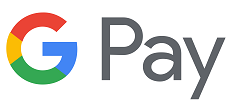
Google Pay is a simple-to-use app for Android and iOS users that offers quick payment options at checkout, both in stores and online. It’s the best option for google users.
- Compatible with: Android and iOS
- Payment limits: You can send up to $5,000 in one transaction (or $500 if not verified). There is a $2,000 purchase limit, and $2,500 daily purchase maximum.
- Cost to send money: No fees, but doesn’t allow you to use a credit card to send money to friends and family.
Google Pay is accepted at most digital checkout locations in grocery stores and other retail locations, making it an easy way to pay without pulling out your wallet.
Google pay can store your payment cards, such as debit and credit cards, and allows purchases via ACH or attached card without additional fees. Google Pay also allows you to send money to family and friends for free, though withdrawing funds to an attached debit card comes with a 1.5% fee (or $0.31, whichever is greater).
Google Pay is available for free to download and it directly integrates with your Google account. This means you can sync your Google Pay account across multiple devices, including your phone, tablet, and computer (using Google Chrome).
» MORE: Learn more about Google Pay
Apple Pay
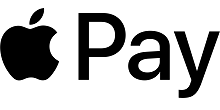 Apple Pay is a mobile payment app for iOS which allows you to make payments in stores and online, as well as send money to others.
Apple Pay is a mobile payment app for iOS which allows you to make payments in stores and online, as well as send money to others.
- Compatible with: iOS
- Payment limits: Up to $10,000 per message and $10,000 in a seven-day period.
- Cost to send money: 1.5% fee for instant transfer withdrawals.
Apple Pay stores credit cards and debit cards, and also has a built-in wallet that can be used to make payments or transfers.
Apple Pay is connected to the Apple Cash service, which allows users to pay iMessage contacts directly through a message. Apple Pay can be used on iOS devices, Apple Watch, and on Mac computers.
There are no fees to send money to family and friends via bank account or debit card, but there is a 3% fee for payments made by credit card. And there is a fee charged for instant transfer withdrawals from your Apple Cash account balance. The fee is 1.5% of the transaction, with a minimum $0.25 charge, and maximum of $15.
» MORE: Learn more about Apple Pay
Samsung Pay
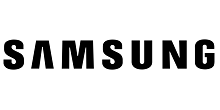
Samsung Pay is a mobile app for select Samsung devices that offers touch-free checkout in stores.
- Compatible with: Select Samsung devices
- Payment limits: Lite limits receiving money to once per day. You can send money eight times per day, 10 times per week, or 15 times per month and total transactions cannot exceed $500. Limits can be raised by providing more personal information.
- Cost to send money: Samsung states fees may apply but doesn’t divulge what those fees are, so watch closely.
Samsung Pay is now part of Samsung Wallet, which can store your payment cards, such as debit and credit cards, as well as store loyalty cards and even gift cards.
Samsung Pay also offers a rewards portal, giving users cash back for shopping through the Samsung Pay app. The app is available for free to download on select Samsung devices and does require a Samsung account to use. But the wallet will sync between your Samsung devices, keeping your payment options available on all of them.
To send money to friends and family you will also need a Samsung Pay Cash Account. There are two plan levels, lite and full.
» MORE: Learn more about Samsung Pay
Xoom
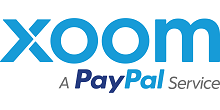
Xoom is an international money transfer service that is a subsidiary of PayPal.
- Compatible with: Android, iOS
- Payment limits: Initial limits are $2,999 in 24 hours, $6,000 in 30 days, and $9,999 in 180 days. Can increase limits by giving Xoom more personal information.
- Cost to send money: Cost varies depending on which country you’re sending money to.
Xoom supports over 160 countries around the globe and is available in 14 languages. Xoom users pay low exchange rates to send money internationally.
Xoom is a mobile app that is available on both Android and iOS devices. Users can deposit funds with a debit card or bank account, or use their PayPal account balance. Xoom also offers an international bill pay feature within the app.
Xoom charges fees based on the currency being sent to the country you are sending money to. Money can be sent to family or friends and arrives instantly in most cases, but some transfers might take two to four business days to complete.
» MORE: Learn more about Xoom
Western Union

Western Union is a well-known money transfer company that now offers a digital payments app for sending smaller amounts.
- Compatible with: Android, iOS
- Payment limits: $3,000 limit per transaction. Can be raised to $50,000 by providing additional information.
- Cost to send money: Varies based on currency, amount, and location.
Users can send up to $500 daily through Western Union to over 200 countries around the globe.
The app is available on iOS or Android devices, and accounts can be funded via bank account, debit card, or credit card. Currency exchange rates are available in real-time within the app, and it also offers international bill pay as well. And you can send money directly through the Western Union mobile wallet to users in supported countries who also have the wallet installed.
Fees are charges based on the currency exchange rate, amount, transaction type, country of origin, and the country you are sending money to. There is a $3,000 limit for sending money, but this can be increased to $50,000 with additional verification.
» MORE: Visit Western Union to learn more
Zelle
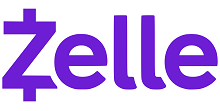
Zelle is not your typical payment app. It is directly linked to your credit union or banking app, and can be used to send payments for free.
- Compatible with: Depends on bank or credit union’s app
- Payment limits: If your bank or credit union doesn’t offer Zelle, your limit is $500 per week. If they do, contact your bank or credit union for limits.
- Cost to send money: Zelle doesn’t charge fees, but your bank or credit union may.
Fun Fact: I use Zelle to pay my landlord every month.
Zelle does not charge fees, and is only used with a participating bank account, or directly with your debit card. You can pay family and friends if they have access to Zelle within their banking app, and transfer funds directly to them.
Zelle does not allow you to link or pay with credit cards, and all balances are stored directly within your bank account, and not on the Zelle platform. Payments are initially limited to $500 for Zelle users without a participating bank, but if you are using Zelle within your banking app, you will need to contact your bank about the payment limits.
» MORE: Visit Zelle to learn more
Meta Pay
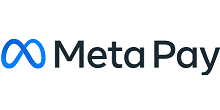
Instagram and Facebook lovers may be fans of Meta Pay You can use Meta Pay within the Facebook app, the Facebook Messenger app, and through Instagram.
- Compatible with: Android, iOS, but users must have a Facebook or Instagram account.
- Payment limits: $2,000 for unverified users, $10,000 for verified users in a 30-day window.
- Cost to send money: No fees, but you can only use a debit card or PayPal account to fund transfers.
Meta Pay offers no-fee money transfers using your debit card or PayPal.Payments may take some time to arrive, though, as payments may not clear for up to five business days.
Meta Pay is integrated into the Facebook Marketplace, allowing you to check out with Meta and make no-fee payments quickly. Meta Pay is also being integrated into other online retail shops, allowing you to pay by logging in with your Facebook or Instagram account.
You cannot connect a credit card directly, but Meta Pay does integrate with PayPal, which allows you to pay with a card. Payments are limited to $2,000 for unverified accounts, and up-to $10,000 for verified accounts within a 30-day window.
» MORE: Visit Meta Pay to learn more
How we picked the best payment apps
Here are some of the factors we considered when deciding on the best apps for payment and transferring funds.
Compatibility
Not all payment apps work on all devices Some are iOS only (Apple Pay), while others offer limited compatibility with certain operating systems. Make sure the payment app your choose works with all of the devices you plan on using it with.
Fees
While many payment apps do not charge fees, there are caveats to each (they have to make money somehow, right?) Look for fees when sending money, especially if you are thinking of using a credit card. And make sure to select “family & friends” when sending money to avoid fees and tax implications.
Limits
If you are planning to use a payment app regularly, make sure you know the limits. While some allow you to send $10,000 or more, some have much smaller payment limits. And the limits on these apps are typically confined to a window of time, such as 7 days or 30 days. Understanding the limits can help you choose the best app for your personal needs.
Security
While most payment apps offer encrypted payments and don’t store your payment information directly, it’s important to find an app that publishes security details publicly. This helps ensure your bank accounts and credit cards are stored safely. Also, only use apps that offer pin numbers or biometric access controls, further protecting your money if you accidentally lose your phone.
Other features
We also looked at what benefits and offerings were offered beyond payment and transfer with these mobile apps.
Who are the best payment apps for?
The best payment apps are for those looking to quickly send and receive money in a convenient way for low fees with their mobile device. This can include paying a friend back for some drinks via a transfer, sending your family money for tickets to the game, or buying your daily $5 latte.
Payment apps are also great for business owners receiving money and sending money to employees and associates. You’ll probably see a small sign advertising a Cash App or Venmo account at a farmer’s market or local craft pop-up.
What are payment apps?
Payment apps allow you to make payments using your phone
These apps can make paying at the store easier if you’re always fumbling through your bag trying to find the right card to pay with. Payment apps generally allow you to link your credit cards or bank accounts to the app. Then, you can make payments directly from the app without having your credit card, debit card or checks present.
Depending on the app you download and your phone, you may be able to pay by tapping your phone at a point of sale rather than swiping a credit card. Other payment apps or phones could allow you to pay by displaying a code that the cashier can scan.
Payment apps allow you to send money to friends and family
The apps generally allow you to send money to an email address or a phone number but other apps let you transfer money to your friends through social media, too.
It’s important that you look into the details of how payment apps work. Most payment apps allow you to make and receive payments for free if you’re using a bank account or an in app balance. However, if you use a credit card, you may have to pay a fee to send or receive money.
Additionally, apps may charge other fees if you want to move the money out of your app account and into your bank account. Apps may also have limitations as to how much money you can send within a given day, week or month.
Are payment apps safe?
Yes, payment apps are safe to use. There’s a user ID like your bank account, password protection and two-factor login methods. You’ll add another layer of security by verifying your identity for some of these apps or raise your limit by doing so if you would like. It’s much safer than say, grandma writing a check or throwing cash in an envelope and mailing it little Timmy.
Use common sense, however, when making a payment or transferring money. Make sure you’re using the correct method for the payment. Make sure you’re sending to the right person and/or ID before hitting that final send button. Also, never give your phone with a payment app to someone you don’t know, even when paying! Scammers can use your account to make a greater payment to themselves and create a headache for you to retrieve the funds.
Summary: Best payment apps
The best payment apps, like Cash App, make paying for your purchases or sending money to family & friends easier than it’s ever been. With direct connections to your accounts, you can quickly send money or “tap to pay” at your local store, without worrying about forgetting your wallet or having to withdraw cash.
But not all payment apps are created equal, and you’ll want to check into the fees and limits of each to make sure you don’t get ripped off. And, as always, keep your apps protected by enabling features like biometric access controls, two-factor authentication, and lock screen controls on your device.


